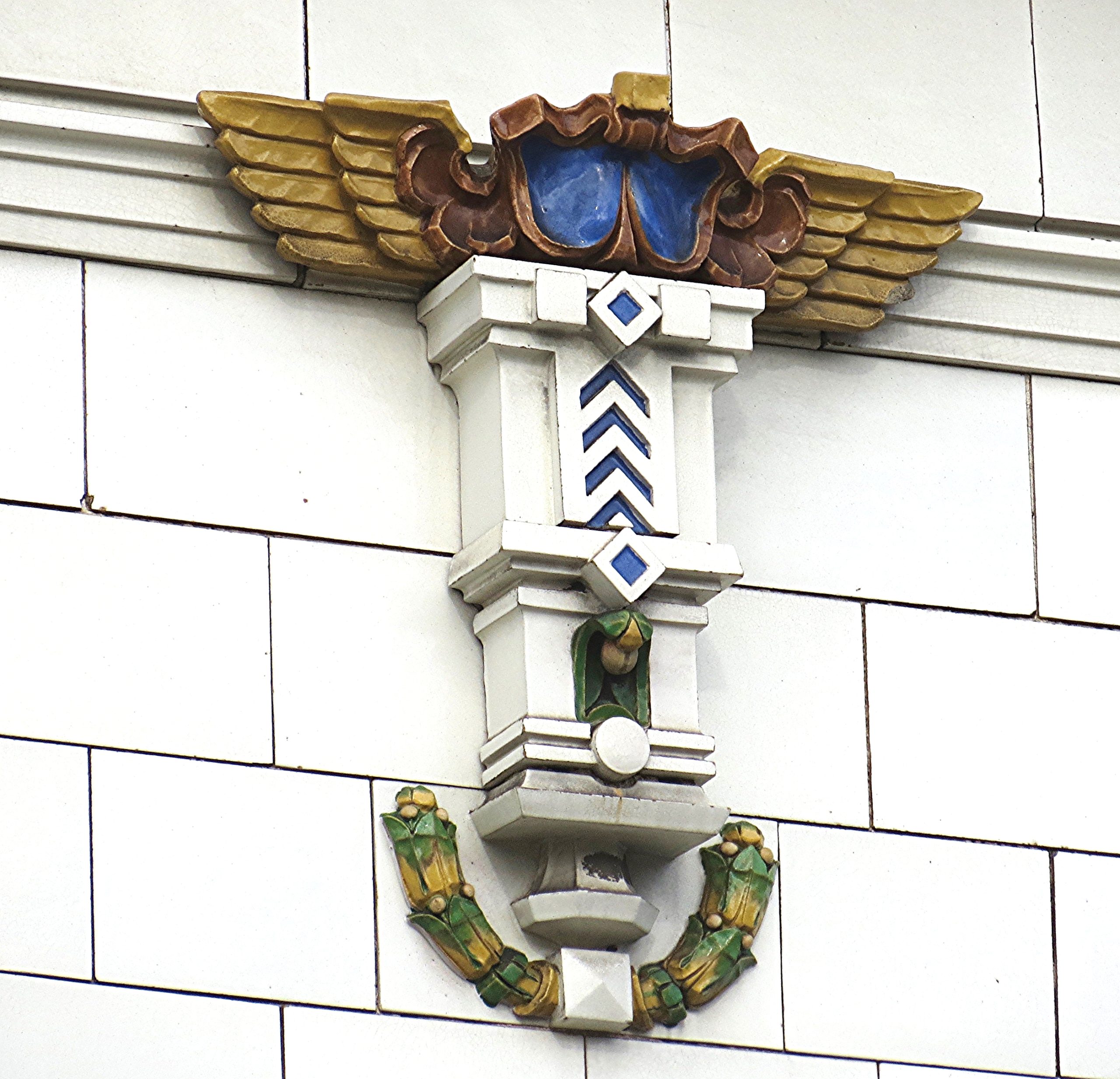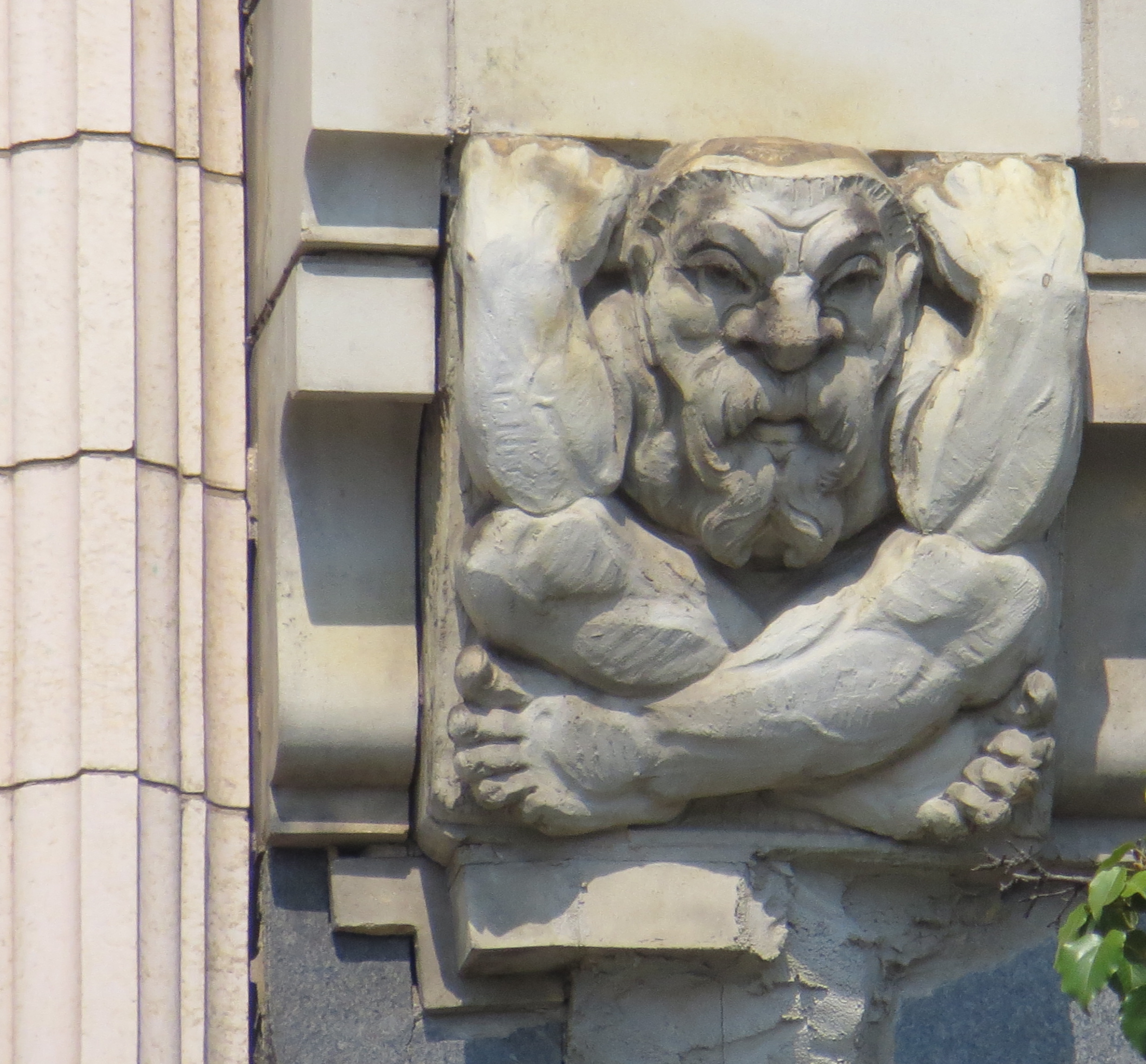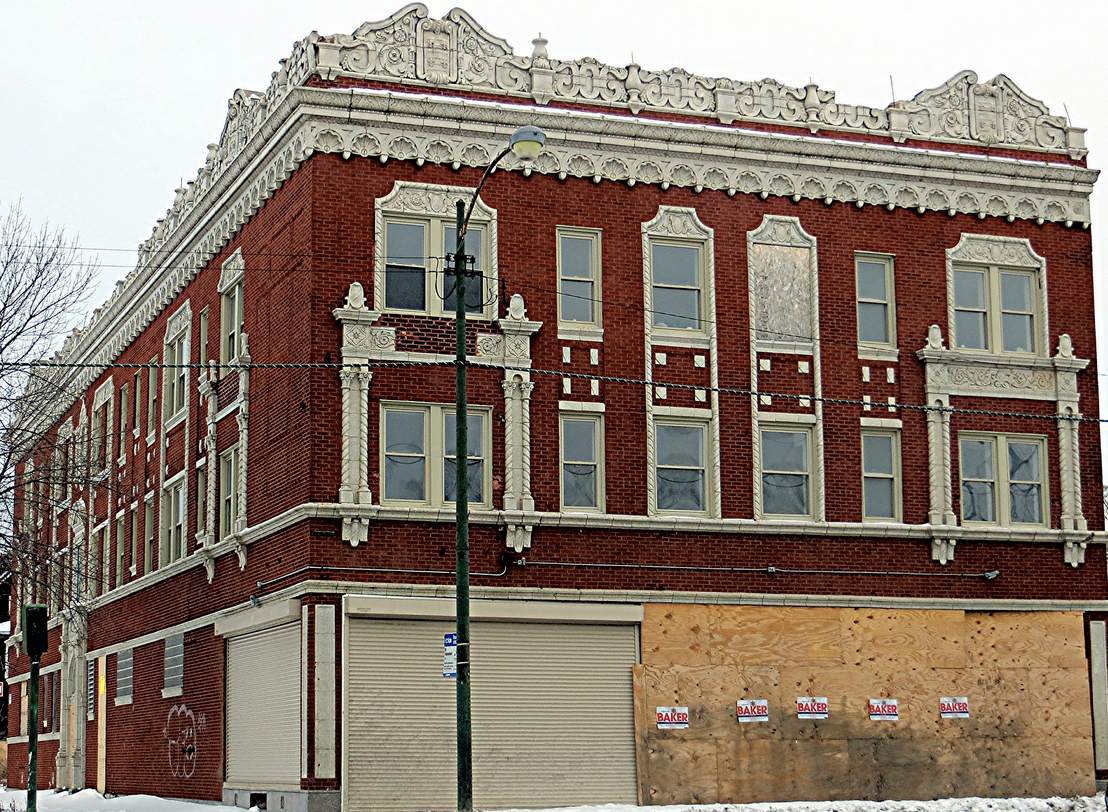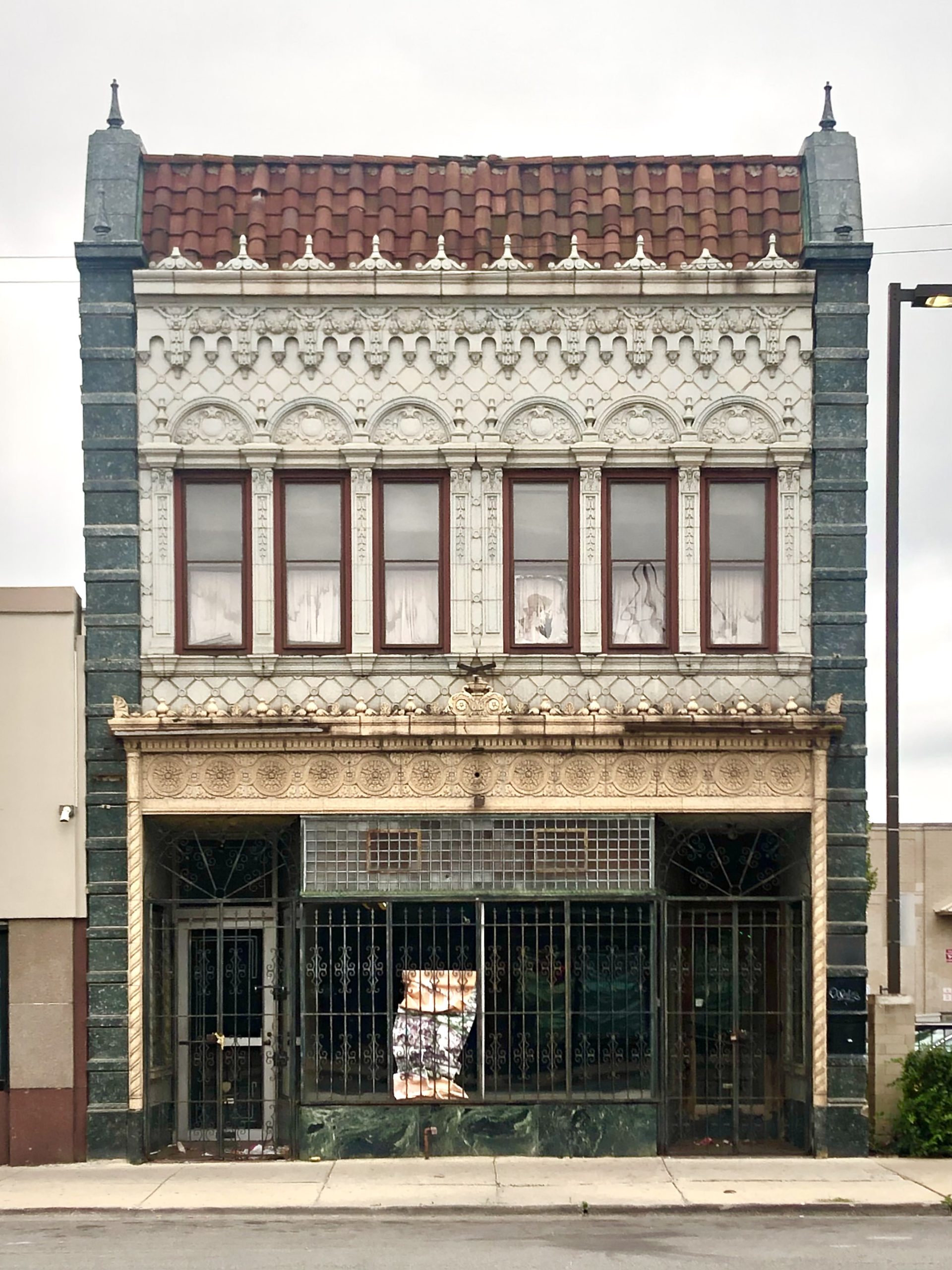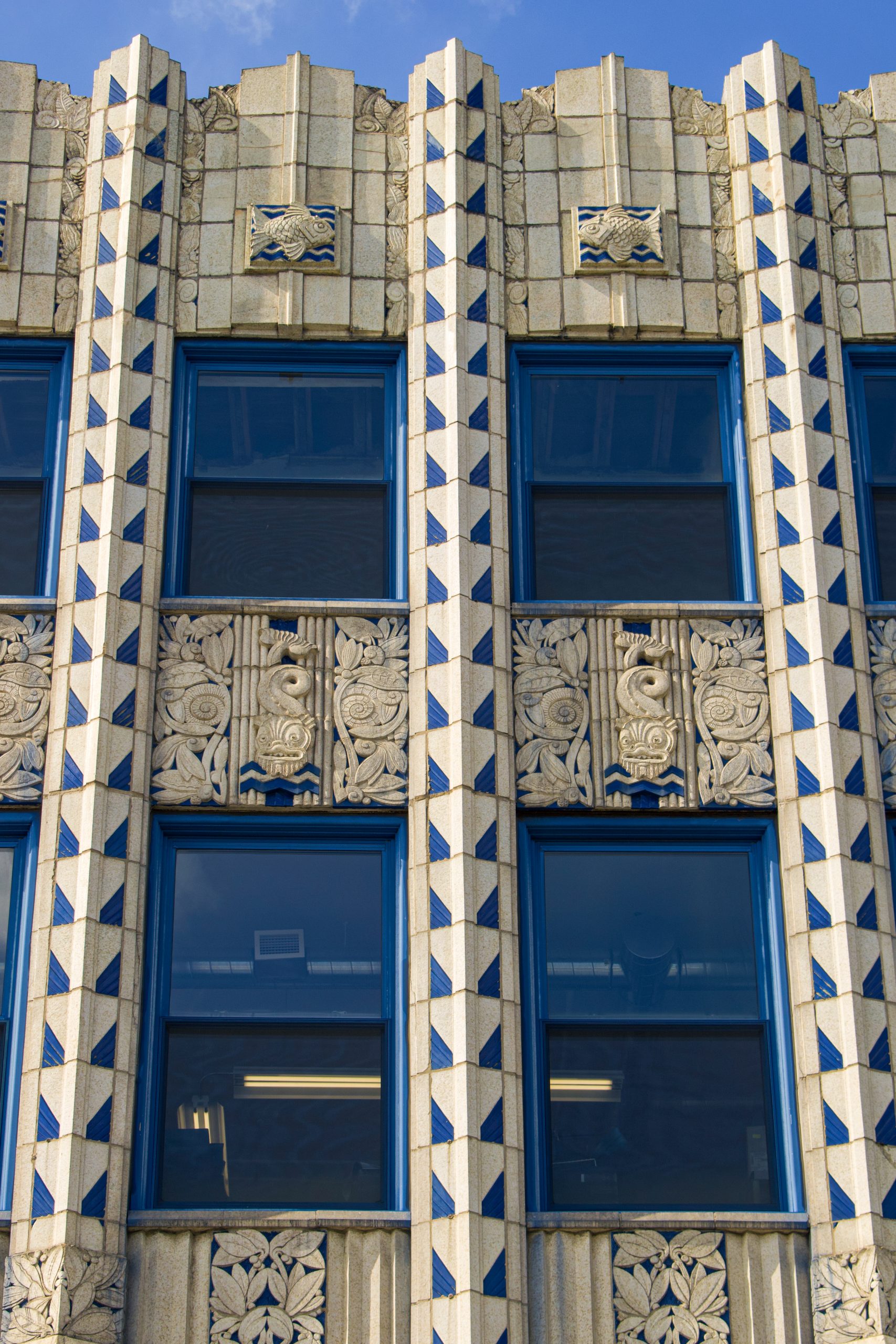PDF Download: Terra Cotta Buildings in Chicago: a 2023 Chicago 7 Most Endangered
Terra Cotta Buildings in Chicago Preservation Chicago 2023 Chicago 7 Most Endangered Chapter Final- 1890s – 1940s
- Various Architects
OVERVIEW
Chicago’s terra cotta commercial buildings are a precious and endangered category of buildings. Located throughout Chicago, these structures range from small neighborhood commercial buildings to world-renowned skyscrapers.
After the Great Chicago Fire, fireproof brick and stone building cladding was frequently used, but the cost of stone ornament was prohibitive. Terra cotta emerged as an ideal alternate being highly versatile, inexpensive, light-weight, and fire-proof. It could be produced in any color, pattern or texture, easily replicated, and could be molded into infinite variations. However, the golden age of terra cotta was relatively brief, so the number of terra cotta buildings in Chicago is finite and irreplaceable once demolished.
Tall terra cotta buildings were built in Chicago typically between the 1880s and 1920s and are generally referred to as the Chicago School of Architecture, the Chicago Commercial Style or the Early Chicago Skyscrapers. The local, national and international significance of these structures is underscored by the pending approval of the UNESCO World Heritage Nomination.
The grand movie palaces emerged in the 1920s in Chicago and terra cotta was used extensively to create whimsical, exuberant ornament. Additionally, versatile and affordable terra cotta was used widely throughout Chicago’s neighborhood commercial corridors to provide additional ornament and detailing to vernacular commercial buildings.
While many tall terra cotta clad skyscrapers in the Loop were demolished to make way for larger post-war office towers, most that survived have been recognized, restored, and protected by Chicago Landmark or Landmark District Designations.
Due to their small size and wide distribution throughout Chicago’s neighborhoods, smaller, low-rise commercial terra cotta buildings are generally unrecognized and unprotected. Building owners are responsible for their maintenance and building condition ranges widely due to the whim of the owner and financial circumstances. Terra cotta buildings located in communities of disinvestment often suffer from deferred maintenance due to lack of resources, low occupancy, and vacancy while terra cotta buildings in wealthy communities are often targeted for demolition and replacement with new construction.
The result is a slow but steady loss of these buildings. The individual building losses appear isolated, but when viewed from a wider perspective of neighborhood and time, the trend is clear and alarming, and will continue without meaningful recognition, protection and support.
With this nomination of Chicago’s terra cotta commercial buildings, Preservation Chicago hopes to focus the spotlight on many wonderful buildings, which often provide anchors to communities across the city of Chicago and are often greatly appreciated by neighborhood residents and delightful for visitors.
HISTORY
Terra cotta can be traced back to the ancient civilizations of Mesopotamia, Egypt, Greece and China in the form of pottery and sculpture. The innovation of using terra cotta as a primary building material, however, occurs much later in history and emerged as a popular structural cladding in the 1880s. The popularity of this material coincides with the advent of the skyscraper, a metal-framed building, and the use of terra cotta as a means of fireproofing as well as an exterior cladding solution—the “exterior skin” of a building. The Chicago Fire of 1871, and similar fire disasters across the nation, led to advances in fireproofing and new building technologies and terra cotta was an economical means to address life and building safety concerns.
Terra cotta—“baked earth” in Latin and Italian—often comes from clay or mud formed, molded and shaped into blocks. The process of terra cotta manufacturing in its final stages is much like the production of bricks, as the clay material of both terra cotta and brick are very much of the same composition, each followed by a firing of the material in a large kiln.
The process of manufacturing terra cotta as an ornamental building material or cladding has resulted in a highly durable product with a degree of plasticity which can be molded and formed into repetitive patterns and forms to emulate stone, often at a less expensive cost. Much like other earthenware, terra cotta can be glazed or unglazed and is often found in a variety of colors, patterns and textures, making it a very versatile building material.
Chicago is known for its terra cotta industries, most notably Northwestern Terra Cotta Company, as well as the American Terra Cotta and Ceramics Company and its Teco line, which were of the highest standards. Chicago Terra Cotta Company and Midland Terra Cotta Company rounded out the large “big four” companies. Terra cotta production was a technology that was embraced in a significant way in our city, making Chicago one of the nation’s principal terra cotta centers in the late 19th and early 20th centuries.
Terra cotta was an economical material and a cost-effective alternative to stone. It was lightweight in comparison to other cladding and building systems due to its hollow cavities, and could be mass-produced and easily replicated. Because it could be formed in repetitive patterns, versus hand-carved blocks of stone, terra cotta became readily available to architects, developers, and builders through factory-produced catalog models, as well as custom-made forms and designs.
Initially, terra cotta was used almost exclusively as ornament on a building’s façade, but by the late 19th century, problems with shrinkage of terra cotta were resolved, allowing entire buildings to be clad or sheathed in the material. This occurred approximately at the same time that early steel-framed skyscrapers were first developed in Chicago, resulting in the use of terra cotta to clad these new, towering structures. Notable examples of these terra cotta clad skyscrapers include the Marquette Building, Fisher Building, Chicago Building, Old Colony Building, Schlesinger & Mayer/Carson, Pirie, Scott Store, Ludington Building, and the Reliance Building (all considered for the Early Chicago UNESCO World Heritage Nomination, along with others). Many from this era have also been lost, such as the Chicago Stock Exchange Building (demolished 1972), Schiller/Garrick Building and Theater (demolished 1961), the Republic Building (demolished 1961-62) and others.
Several terra cotta-clad Downtown buildings not recognized as Chicago Landmarks include the Boston Store (1 N. Dearborn St.), the Mandel Brothers/Wieboldt’s Store (1 N. State St.), the State-Lake Theater Building (190 N. State St.), the Rothschild Store/Goldblatt’s Building (333 S. State St.), the Maurice Rothschild Store (300 S. State St.), the McClurg Building (220 S. Wabash Ave.), the Waterman Building (127 S. State St.), and the Century (202 S. State Street) and Consumers Buildings (220 S. State Street) (a 2015, 2022 and 2023 Chicago 7 Most Endangered).
Terra cotta buildings often fall into three categories:
- An architect-designed terra cotta building, most notably those larger or taller structures found in the central business area. These were often commissioned by an owner to an architect or architectural firm for a specific project or development of a high caliber or even as a speculative investment property. However, this is not exclusive to taller buildings.
- Other examples often occur in neighborhoods across Chicago, usually on commercial streets. This terra cotta building type is the familiar speculative building prototype—a “shops and flats” building—where a commercial tenant or series of tenants occupy the front floor storefront, with apartments above. This allows for a cost-efficient building to be constructed with various streams of income from the ground floor businesses to apartment dwellers above, which may include the proprietors of the shops below.
- Brick and terra cotta buildings, which are often a composition of brick masonry clad structures with terra cotta detailing. Both residential and commercial examples of this type can be found throughout Chicago, with terra cotta door, window surrounds, and cornices on a brick or masonry structure. These types of buildings range from tall residential and commercial buildings to storefront, walk-up and courtyard buildings. Often the terra cotta is a substitute for stone.
- Factory/catalog terra cotta buildings, a product of a time when whole building systems were marketed to architects, builders and developers after terra cotta shrinkage was mastered and calculated into the equation. These offerings often provided a number of standard-size blocks of terra cotta which were easily adaptable to many building sizes and types and available in a variety of architectural styles, shapes and colors. One example is that of the Midland Terra Cotta Company, which manufactured whole systems of “Sullivanesque” facades, borrowing from the vocabulary and spirit of the ornament of architect Louis Sullivan, often to his dismay. However, many terra cotta companies, including those based in Chicago, all had “ornamental systems,” with which an architect could clad a structure, often at the request of the client.
The color palates of terra cotta were as versatile as the material itself. Colors ranged from white and buff to deep rich greens, reds, yellows, oranges, blues, purples and black. This would help create the vision of a polychromatic terra cotta clad building, perhaps reflecting the nature of the principal business within.
THREAT
We have divided these threatened buildings into several categories:
– Those structures most endangered or threatened with demolition. These buildings can be in areas of tremendous investment and on valuable land or sites, or in areas of extreme disinvestment, but not always limited to these circumstances.
– Those buildings which are partially occupied or partially utilized/underutilized throughout Chicago.
– Buildings which are facing an uncertain future
– Structures which appear to be occupied, but where real estate influences may place them/or cause them to be in danger in the future.
Terra cotta buildings are continuously threatened by replacement, many times due to disinvestment in certain communities. Often, they are lost to inappropriate strip mall complexes and “big box” stores, bank branches, and drug stores, many of which appear to have a limited lifespan and are soon left vacant by corporate consolidations, overbuilding and short-term planning. These substandard buildings, made and designed from the most economical materials may be considered disposable architecture, with a very limited, perhaps one-year life. These replacements often come at a great environmental cost, especially when considering that they necessitated the demolition of an already-standing terra cotta building.
As has been mentioned, Chicago is filled with threatened, large-scale terra cotta buildings. Some of the most notable include the Century and Consumers Buildings, two skyscrapers in the heart of Chicago’s Downtown. Also, former movie theaters like the Uptown Theater and the Congress Theater, both designated Chicago Landmarks, have been threatened for many years, but still remain in disrepair. Other prominent examples are buildings located along many of Chicago’s commercial throughfares, like those in the Madison-Pulaski shopping district. These include 4042 and 4132 W. Madison St., the Hotel Guyon at 4000 W. Washington Blvd., the terra cotta-clad storefront at the northwest corner of E. 61st St. and S. King Dr., large sections along S. Halsted St., and S. Michigan Ave. between 107th and 115th Sts. in the Roseland community.
Groups of buildings at commercial intersections which face an uncertain future, are partially utilized, vacant above the first floor, or appear to be abandoned are common sights. While there are countless examples, some of the finest include a group of two-story buildings at 69th and Halsted, a four-story brick and terra cotta building with an elaborate cornice at 67th and Halsted, and a collection of one-story early Jewel Tea Company grocery stores around the city.
Many of these wonderful, modestly scaled structures throughout Chicago should be considered for some type of protections looking to the future, but remain currently without any historic designation. A few of these include buildings at the intersection of Belmont and Central (e.g 5551 W. Belmont Ave.) in Belmont Cragin, the “Tulip Building” at 4936 S. Ashland Ave. in Back of the Yards, groups of buildings at 79th and Ashland, S. Michigan Ave. in Roseland, areas of N. Clark St. in Andersonville (e.g. 5517-5527 N. Clark St.), the W. Lawrence Ave. corridor in Albany Park, and the W. Devon Ave. corridor in West Ridge (e.g. 6422 N. Western Avenue).
RECOMMENDATIONS
The City of Chicago must take a holistic approach to reengaging historic terra cotta buildings, many of which anchor neighborhood commercial districts. Chicago should be looking to create programs which encourage a revival of and reinvestment in these beautiful structures. Additional funds should be dedicated to these buildings as part of community reinvestment programs. We’ve encountered areas and buildings faced with exorbitant tax bills, even when the community has experienced huge disinvestment. In situations like these, perhaps properties could be reassessed with outreach to the owners for tax reduction relief and short-term loan programs offered by the City of Chicago, so as to promote the maintenance and restoration of these buildings’ terra cotta facades.
We should also look to developers to consider programs to revitalize these historic terra cotta properties and pursue affordable housing on the second floors of these commercial buildings. Neighborhood Character Districts, or Conservation Districts, with some protections could also be considered as alternatives to demolition, with special benefits offered to reinvest in these structures.
The City of Chicago should consider creating terra cotta themed Chicago Landmark Districts to recognize and protect terra cotta buildings throughout Chicago. Terra cotta buildings on the South and West Sides are often at risk of deferred maintenance and demolition by neglect while terra cotta buildings on the North Side are often at risk of demolition for new construction. There are many examples of existing Chicago Landmark Districts which include historic terra cotta buildings that have catalyzed investment, restoration, and renewal.
